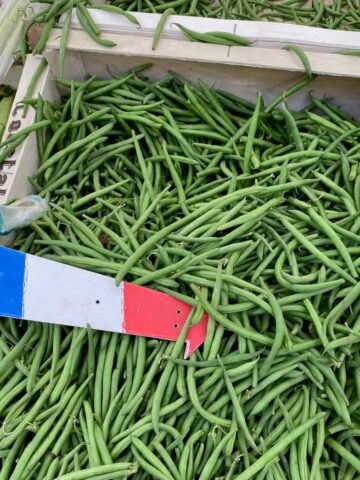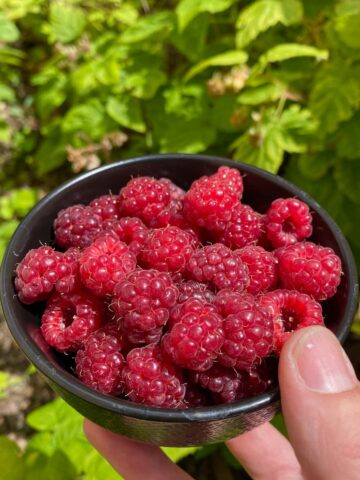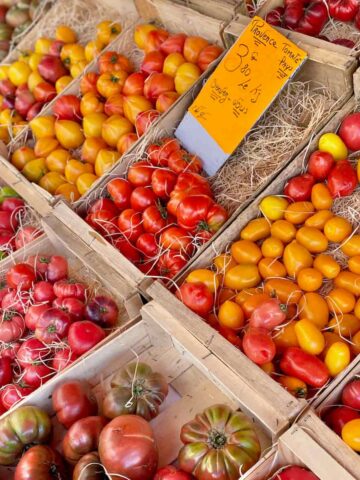Unearth the intriguing history of pineapples, from Columbus's discovery to its symbolism of wealth and hospitality. Plus, learn about its nutritional facts and ways to serve a delicious pineapple dessert.
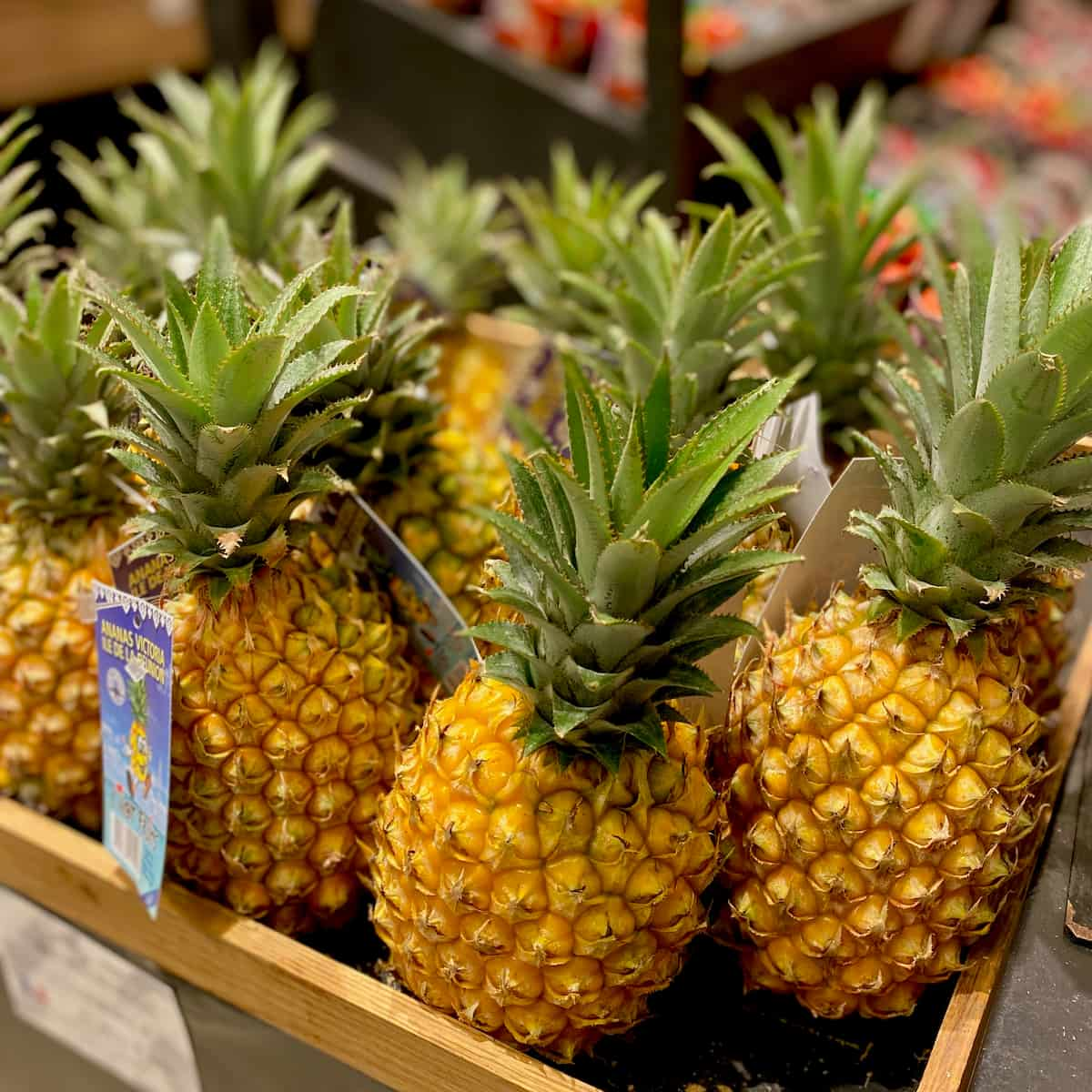
Pineapple Season
Full season for pineapples is from Winter to Spring but available in France between October and April.
Pineapple History and How it Came to France
Christopher Columbus discovers the pineapple in 1493 in Guadaloupe and it reaches the Spanish court in the 16th century. It's not until the 17th century that it's popular amongst royalty and the aristocracy, especially in the royal courts in Holland and the UK then France.
According to the gardeners and horticultural students on my visits to Versailles' Potager du Roi, the Sun King, Louis XIV, wasn't interested in pineapples - even if it was seen as a luxury. No wonder; he eagerly bit into one, including its inedible spiky skin!
So Jean-Baptiste Le Quintinye, botanist of the King's Vegetable Garden at Versailles had no particular pressure to grow them in the royal greenhouses.
Louis XV, however, adored the sweet pineapple after first tasting them in the 1730s. So in 1735, his gardener, Louis Le Normand made a breakthrough at Versailles. Instead he grew them in a layer of fermented manure, trapping heat under glass bells.
It was such an expensive and foreign luxury, that it was seen as a sign of power and wealth. In the 18th century, French noble families would often hire a pineapple just to show it off at the table (I picked that one up on guided tours in Versailles Palace and Vaux le Vicomte).
What Does Pineapple Mean (Ananas)?
Said to resemble a pine cone, the word pineapple in French, Ananas, is believed to come from South America. The Incas originally called them "Nana", meaning fragrance or parfum. Not to be confused with the French slang expression, Nana, meaning a girl.

What do Pineapples Symbolise?
Pineapples have been used for centuries to symbolise the ultimate hospitality to guests. They were a sign of the most tropical luxury at the table and, therefore, wealth.
It's even seen in architecture, as a warm welcome at entrances. Pineapples are normally carved out of stone and wood, decorating front doors, gates, bed-posts, staircases and linens.
However, if you see an upside-down pineapple, then that means something rather different. I hear it's a symbol for swingers. So I wonder what that means if you serve an upside-down pineapple cake?
Have you seen the Scottish Pineapple? It's a bizarre stone building with a pineapple roof that was constructed by John Murray, the 4th Earl of Dunmore in 1761 in Scotland near Airth in Stirlingshire. Imagine building this for your wife's birthday present?
For much more fruity fascinating facts about the pineapple, I recommend Gary Okihiro's book, Pineapple Culture.
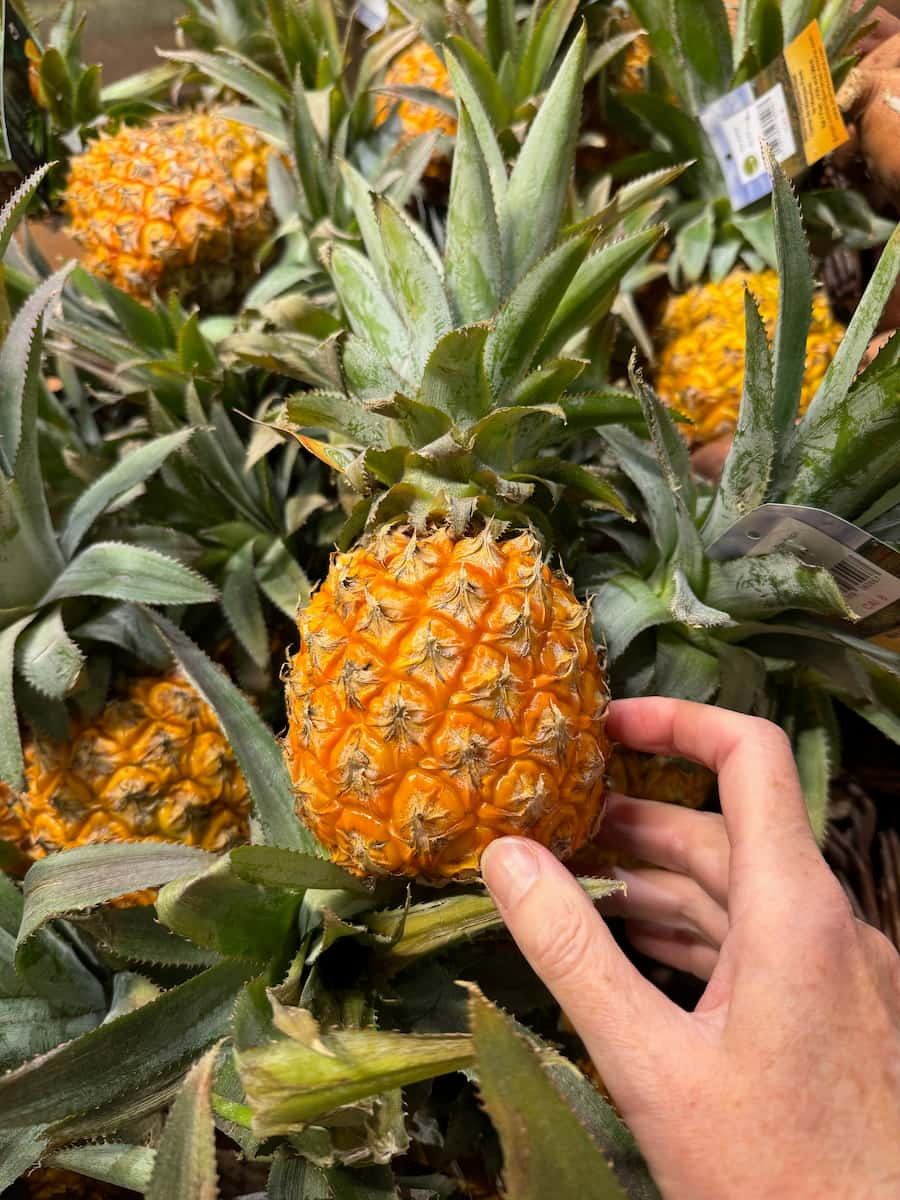
What's the Sweetest Pineapple?
The queen of sweet pineapples is the Victoria pineapple. It's smaller than the others (Cayenne or Sweet) and most concentrated in flavour. It got its name from Queen Victoria, who particularly adored this kind of pineapple. The best are found on Île de la Réunion.
Did you Know? Victorias are so naturally sweet and small that you can even eat the core, normally inedible in other varieties.
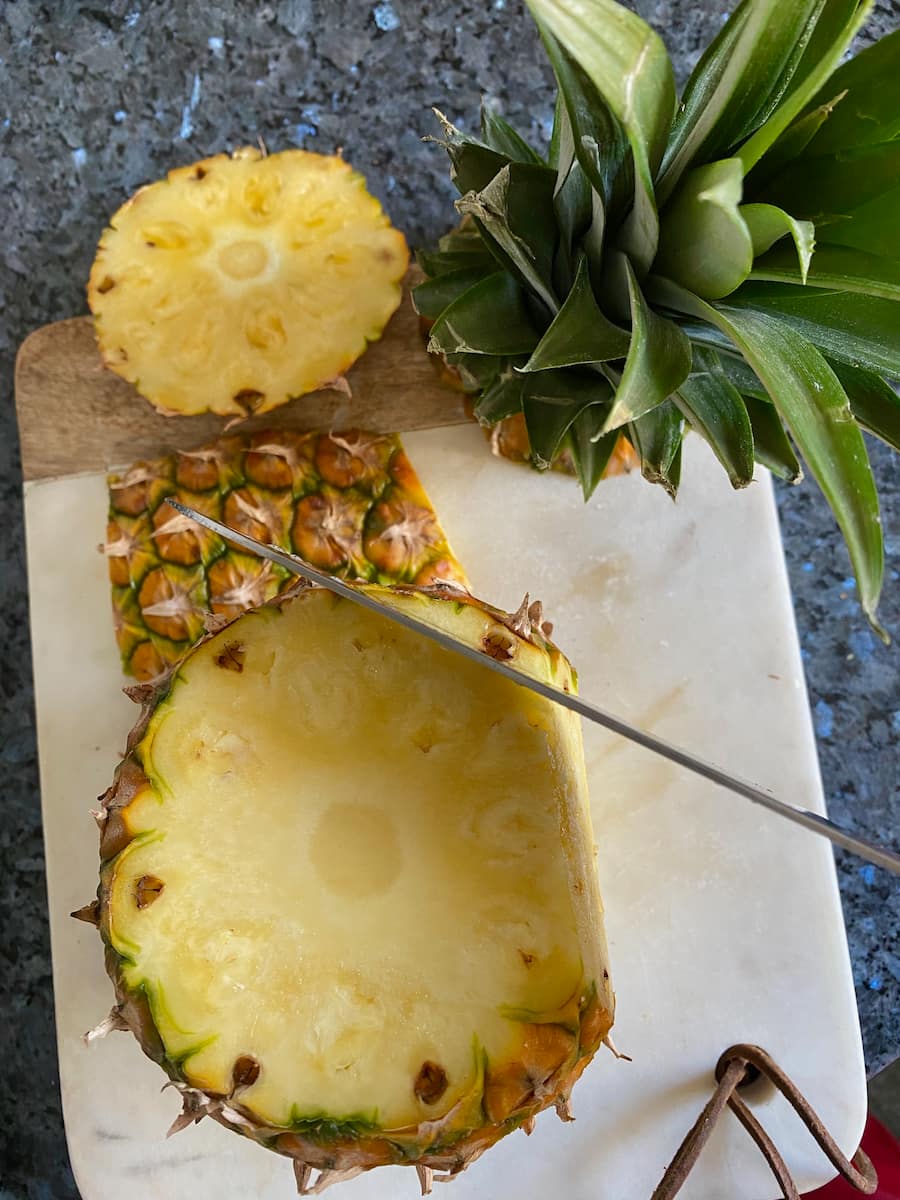
What are the Benefits or Eating Pineapple?
According to Aprifel for the French Ministry of Agriculture, pineapples are high in vitamin C, vitamin B9 and Manganese. High in fibre, they include an enzyme called Bromelaine which helps aid our digestion of protein.
Are there Side Effects?
As my husband grew up in the Ivory Coast for 17 years, these enzymes are apparently not good for the teeth if eaten raw in huge quantities. So, if you plan on having a huge pineapple feast, brush your teeth well after consuming them or cook pineapple to destroy the enzyme.
The enzyme also stops jelly from setting so don't use pineapple juice.
How to choose the Best Pineapples
The best pineapples should be heavy and fragrant. They normally weigh in at 1-2kg. It should be firm but slightly soft to show it's ripe. Ensure there are no marks. Don't worry about the pineapple's colour, as this isn't a factor for choosing - each variety has a different shade.
How to Store
As pineapple is grown in naturally sunny, tropical climates, avoid storing in the fridge or under 7°C if possible. Consume as soon as possible - ideally within 5-6 days.
Serving Ideas for Pineapples
Here's a pineapple serving idea, thanks to a training course I had with chef Frédéric Jaunault (Meilleur Ouvrier de France, specialist in fruits and vegetables). He served a tropical fruit salad in an upside down pineapple, directly on its leaves.
To make your own, cut it horizontally, hollow out half of it and mix with other tropical fruits, lime juice, ginger and a hint of Cayenne spice. Scoop out the inside flesh using a grapefruit knife or a long serrated bread knife.
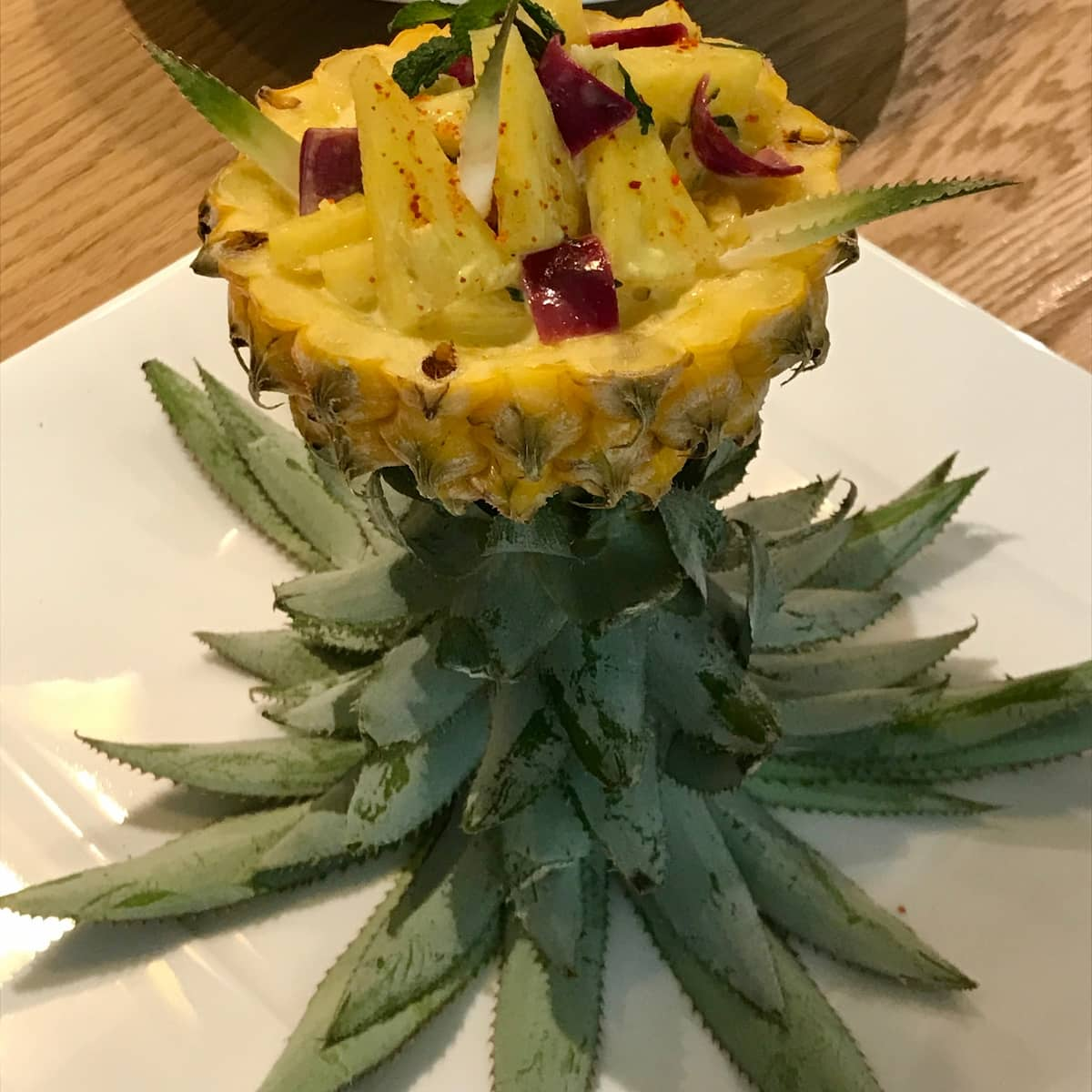
Alternatively, pineapple is also great served with savoury. Chop up the fruit into chunks and fry with a Caribbean style chicken curry and serve in the same way above. Also goes well with duck and hams.
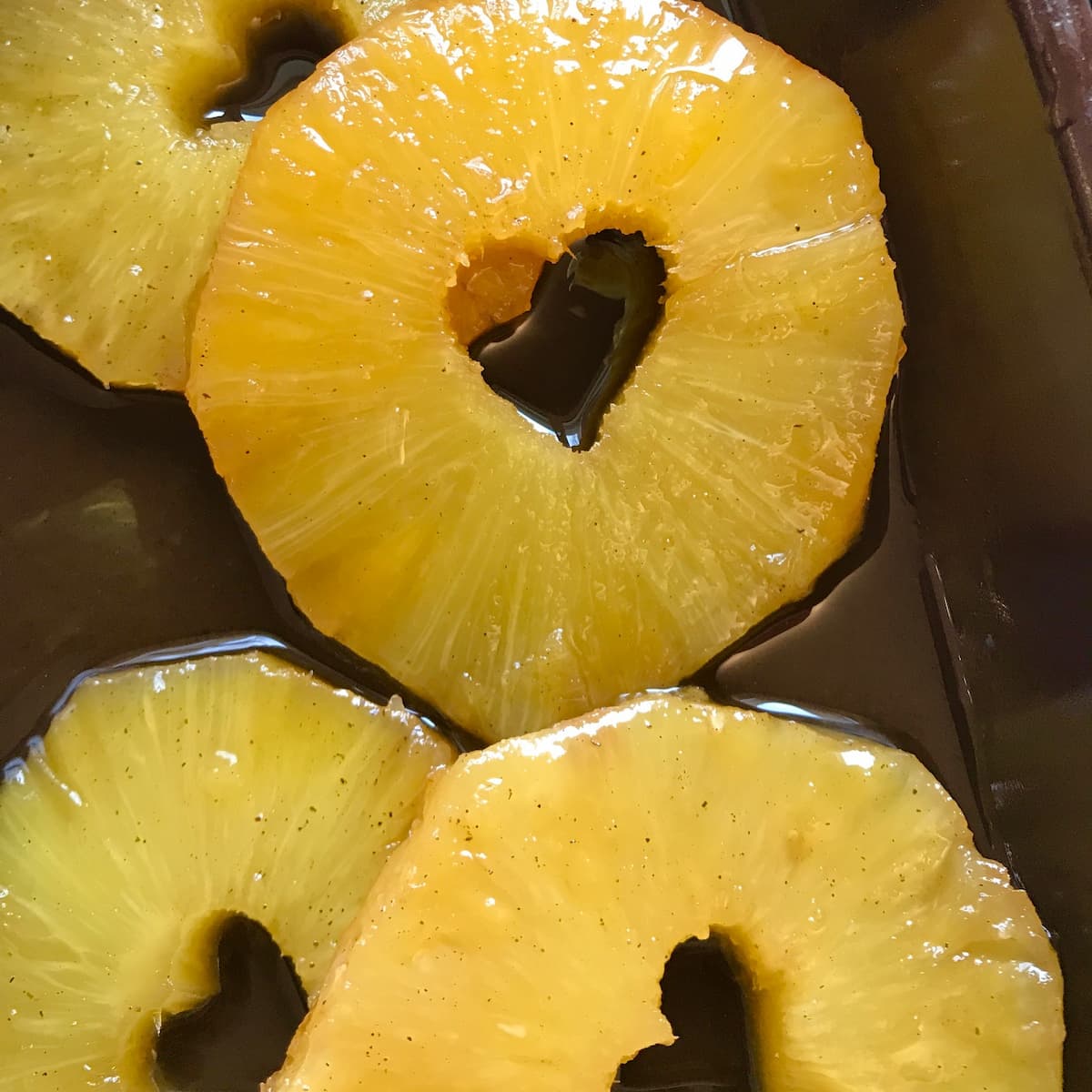
How to Make Pineapple Valentine Hearts
For your Valentine desserts, pineapple slices are perfect to surprise your loved ones. Forget the classic round hole: cut out love hearts in the centre using an apple corer or sharp knife.
Dessert Recipes with Pineapples
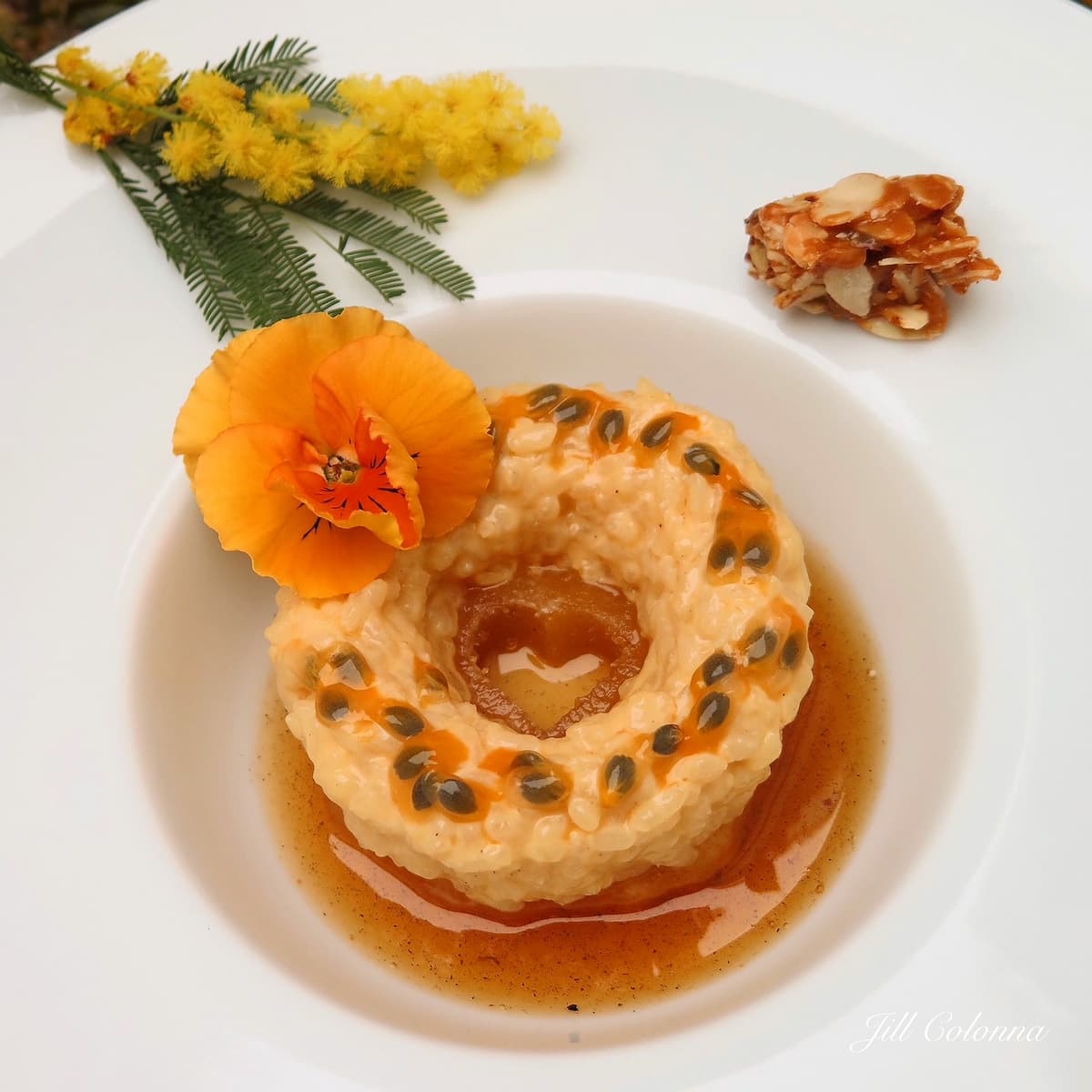
Use the hearts above in this Caramelised Pineapple Rice Pudding Dessert, roasting slices in vanilla and rum using the recipe below. The flavours are incredible!
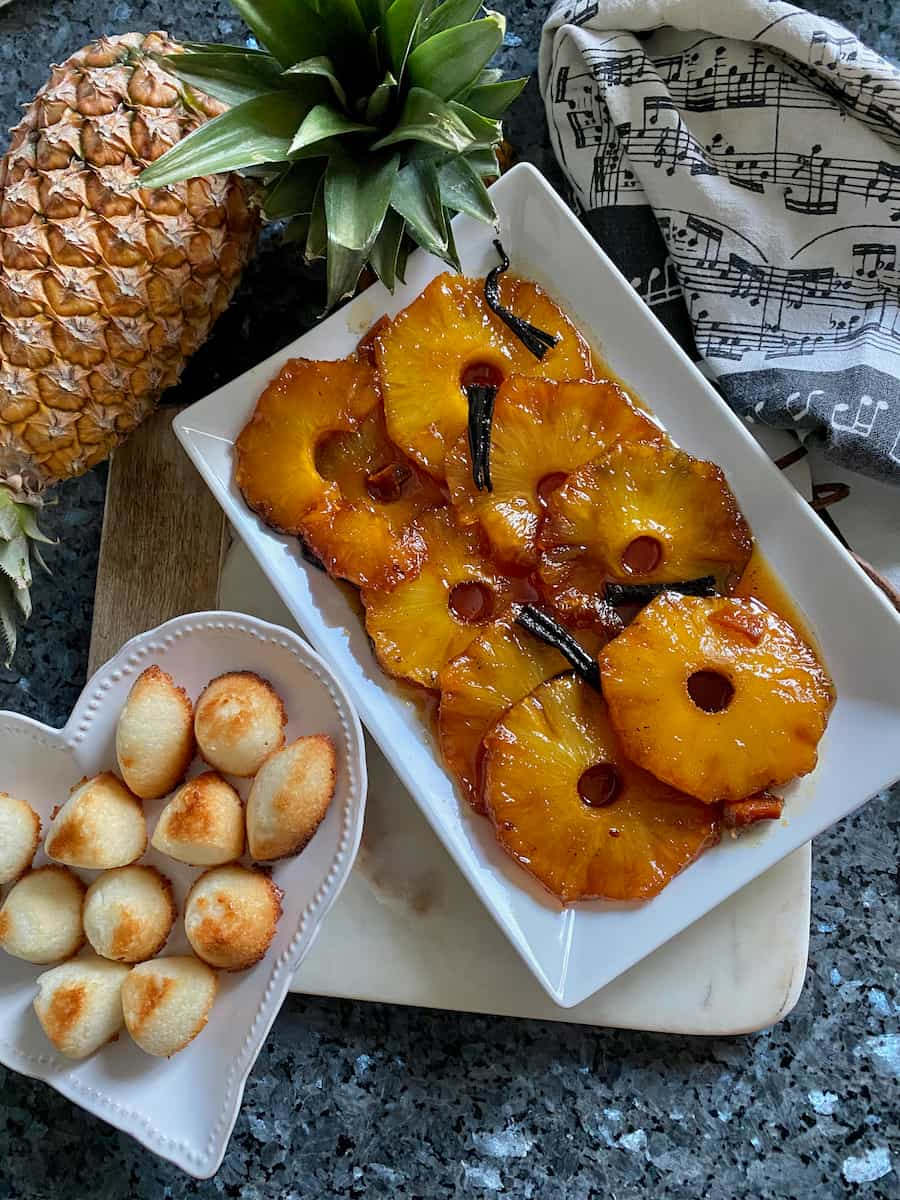
Sticky Roasted pineapple with vanilla - in our opinion, the best way to serve pineapple. Roasted in a vanilla caramel with rum, this is the ultimate dessert served with vanilla ice cream and/or with coconut macaroons.
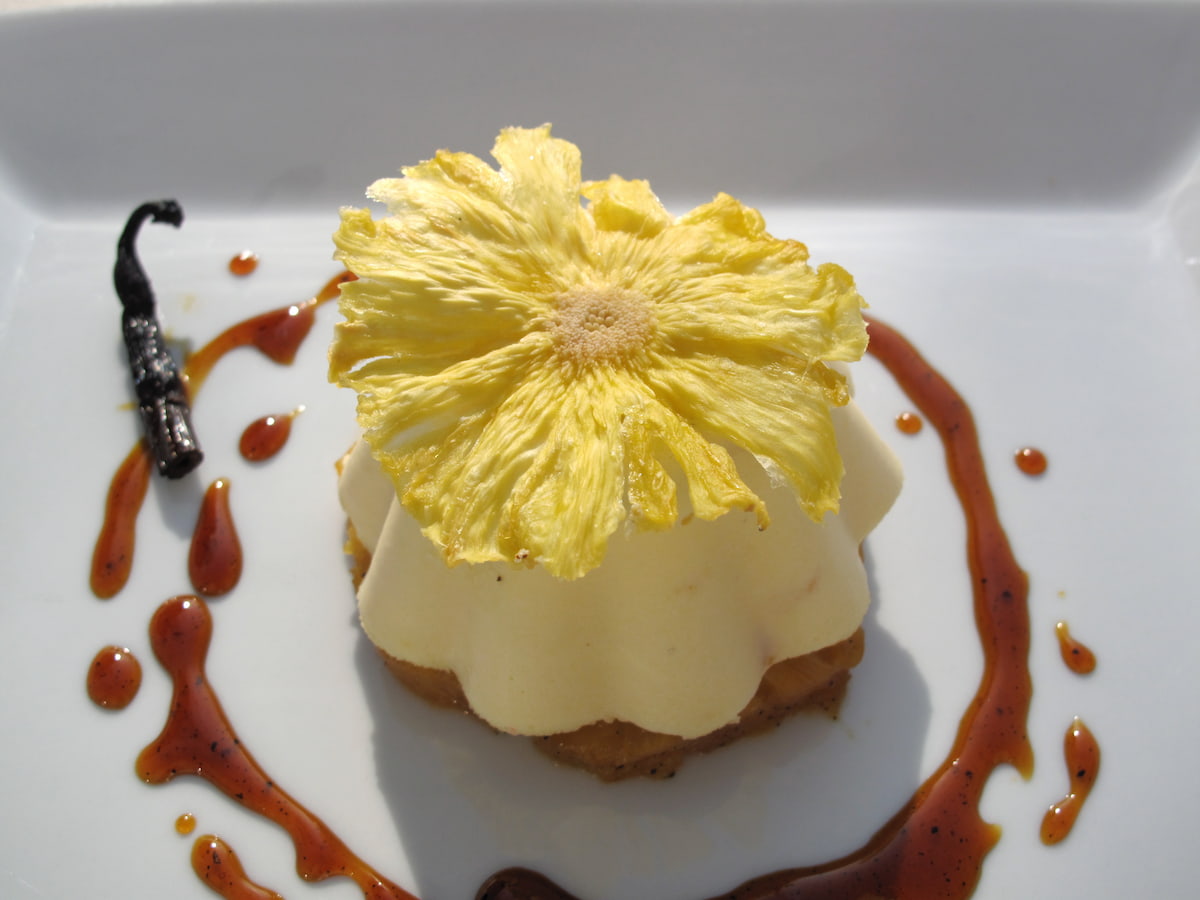
Dry pineapple slices in the same way as these dried rhubarb chips and serve on top of ice cream or these honey iced parfaits.


